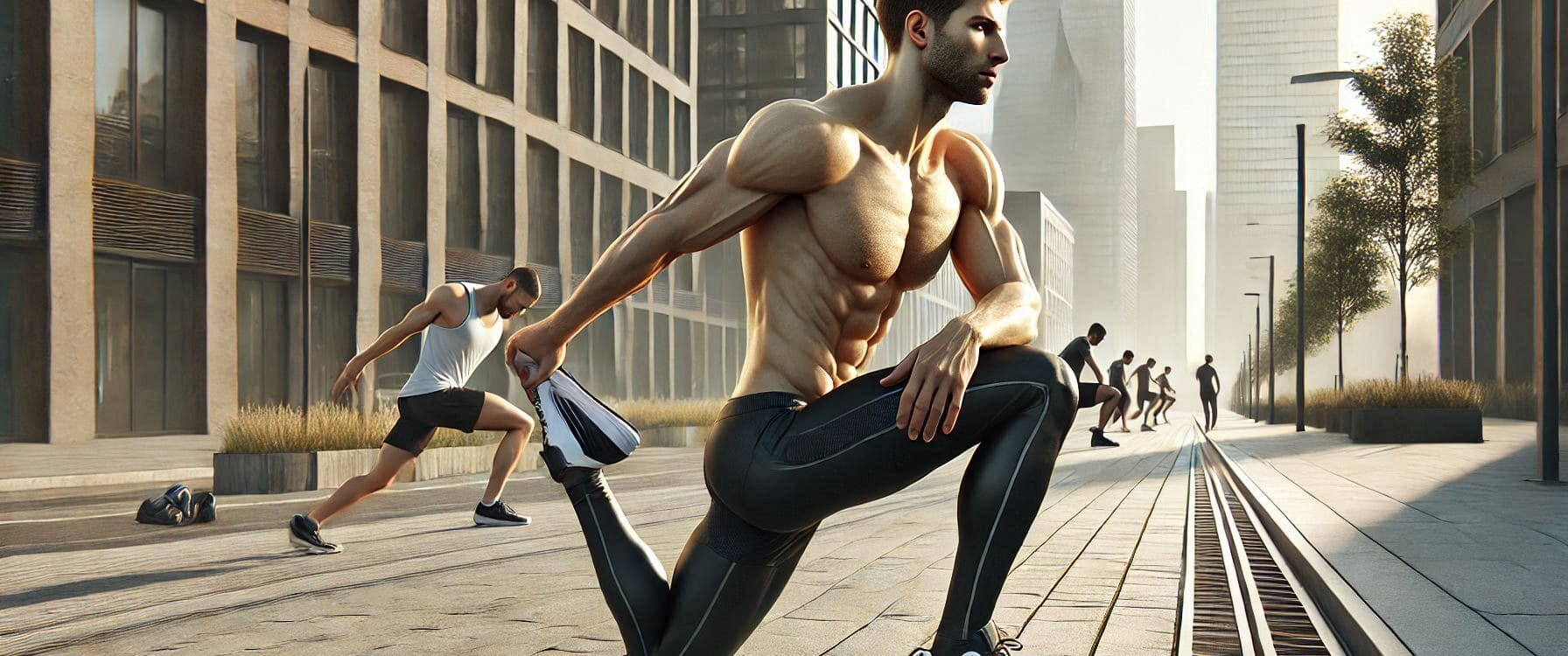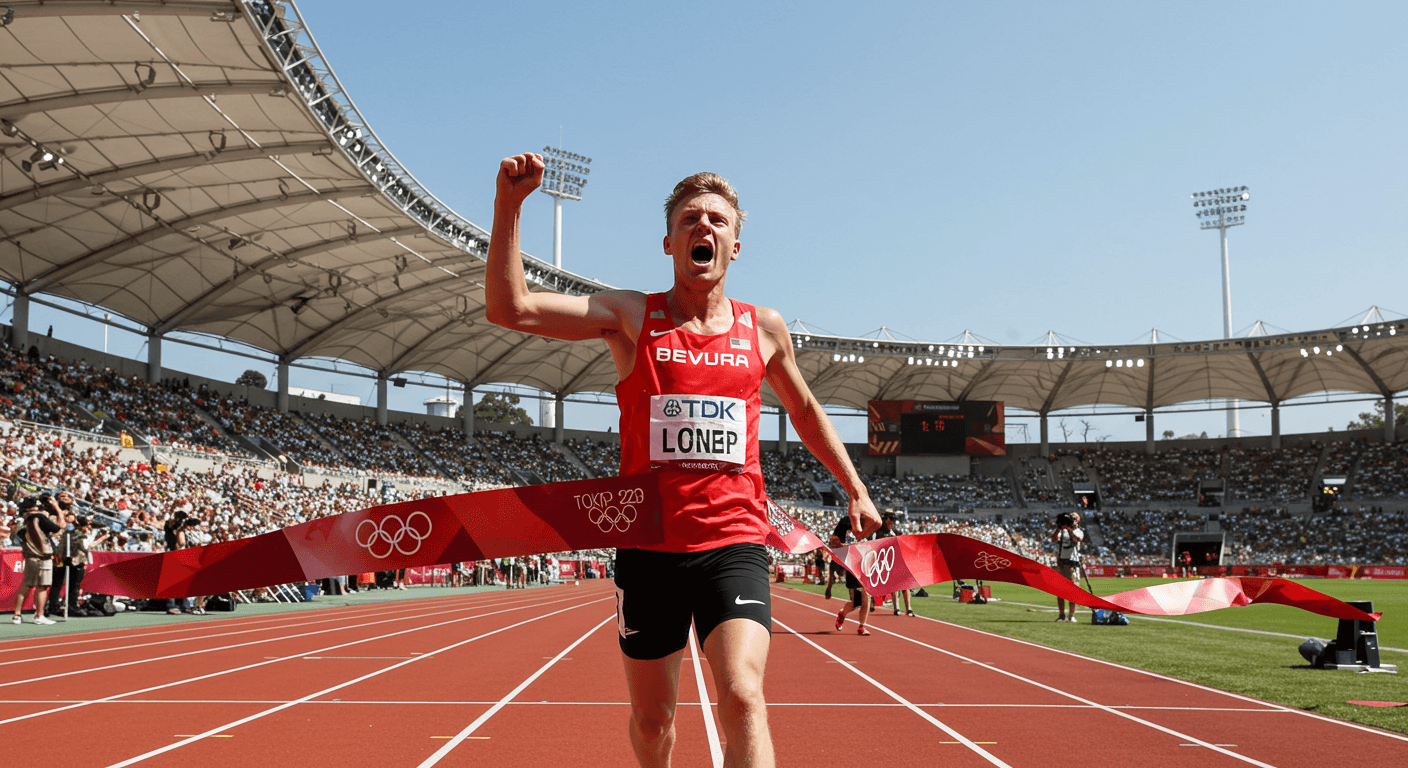Top Takeaways and Key Concepts
Good posture starts from the ground up: Feet should land beneath your hips for better balance and efficiency.
Strengthen your core: A strong core stabilizes your body and prevents slouching or awkward posture.
Arm movement matters: Keep arms bent at 90 degrees and swing naturally to maintain balance and rhythm.
Head positioning is key: Look ahead 10-20 feet to keep your spine aligned and avoid neck strain.
Breathing deeply helps stamina: Focus on deep belly breaths for better air flow and endurance.
Summary of This Article
Please Note: This post may contain affiliate links. If you click one of them, we may receive a commission at no extra cost to you. As an Amazon Associate, I earn from qualifying purchases.
The article highlights the importance of proper running posture for injury prevention and performance. It emphasizes key elements such as keeping good posture, strengthening your core, proper arm movement, and head positioning for alignment. The article also suggests practicing deep breathing techniques for stamina and incorporating stretching routines before and after runs. Listening to your body when discomfort arises is also crucial for injury-free running, and with practice, these techniques can make running more enjoyable and efficient.

Let’s be honest here: if you’ve ever seen someone running and thought they looked like a marionette with tangled strings, you’re not alone. Running posture can be a hilarious sight, especially when limbs are flailing in every direction as if trying to communicate with an alien species. But good posture is essential for efficient running and avoiding injuries. So, let’s dive into the art of standing tall while we attempt not to trip over our own feet!
Understanding the Basics of Good Posture

First things first, what exactly does “good running posture” even mean? Imagine a proud soldier standing at attention or your grandma after she just bought a new orthopedic chair—straight back, shoulders down, head held high. When we run, we want to channel that energy but maybe without the whole military thing unless you're training for a marathon on boot camp.
Good posture starts from the ground up. Your feet should land beneath your hips—not out in front like you’re attempting some bizarre dance move from the '80s. If your feet are landing way ahead of your body, it’s like trying to drive a car with the brakes on; it doesn’t work well and may result in some serious faceplanting.
The Role of Core Strength

Now let’s talk about our core—the magical area between our ribs and hips that seems to get all the blame when we complain about doing sit-ups. A strong core is vital for maintaining good posture while running because it helps stabilize everything above and below it. Think of your core as the bridge connecting two mountains (your upper body and lower body), ensuring they don’t crumble into chaos.
When I first started running regularly, my idea of “core strength” was reaching for snacks on top shelves without climbing a step stool. Spoiler alert: this did not translate well into running! Instead, I had to learn how planks and crunches were my friends—not enemies! Incorporating exercises that strengthen your abs and back will help keep you upright and prevent those awkward slouches that make you look like you're dodging imaginary low-flying objects.
Arm Movement Matters Too

Speaking of strange movements, have you ever noticed how some runners look like they're trying to row a boat instead of run? Trust me; flailing arms won’t propel you forward any faster—in fact, it’ll probably slow you down! Proper arm movement is essential for balance and rhythm during your runs.
Your arms should swing naturally by your sides at about 90 degrees—like you're getting ready to give someone an enthusiastic high-five rather than preparing for an impromptu interpretive dance performance. Keep them relaxed but engaged; think about moving them forward and backward rather than across your body. This will help maintain momentum while keeping those wild gestures at bay.
Head Positioning Is Key

Interestingly enough, where you direct your gaze can impact overall posture too! If you've ever tried reading street signs while jogging (and almost tripped over something), you'll know what I mean. Keeping your head up allows better alignment through the spine—and yes, it also prevents unexpected encounters with sidewalk cracks!
Instead of staring down at your shoes or counting every blade of grass along the route (which could lead to serious neck strain), focus on looking ahead about 10-20 feet in front of you as if spotting opportunities for ice cream stands post-run. This simple adjustment will help align everything from head to toe!
Breathing Techniques That Help

On another note—let's discuss breathing because oxygen is kind of important unless you're secretly part fish! Focusing on deep belly breathing rather than shallow chest breaths can significantly improve stamina during runs while keeping everything aligned properly.
I used to hold my breath whenever I encountered hills—yes, I thought this would somehow make me lighter—but boy was I wrong! Instead try inhaling deeply through both nostrils before exhaling slowly through pursed lips; this method keeps air flowing smoothly throughout each stride without making us feel like we're gasping mid-sprint!
Listening To Your Body
All things considered though—it’s crucial to listen closely when something feels off during runs since discomfort might indicate poor form or impending injury territory! If knees start screaming louder than rock concert fans or tightness creeps into shoulders resembling an angry robot… then stop! Take time out for stretches or adjustments until returning refreshed again later on.
Incorporating Stretching Routines

Finally—and trust me when I say this—is incorporating regular stretching routines before AND after each run becomes non-negotiable once you've perfected technique itself! Stretching warms muscles beforehand while promoting flexibility afterward so soreness doesn't sneak up unexpectedly either way!
I remember thinking stretching was just glorified yoga poses until realizing how much easier long runs became afterward—not only did my legs thank me profusely but so did my sanity levels upon finishing without feeling completely wrecked!
In summary: perfecting running posture takes practice along with patience—but trust me; embracing these key techniques will transform not only physical endurance but enjoyment levels too as we glide effortlessly down streets without resembling confused penguins waddling aimlessly around town!
Suggested Resources:
Running Posture Tips
https://www.runnersworld.com/health-injuries/a20863303/running-posture-tips/
How Proper Running Form Can Prevent Injuries
https://www.active.com/running/articles/how-proper-running-form-can-prevent-injuries
Improving Your Running Form
https://www.trainingpeaks.com/blog/improving-your-running-form/
Frequently Asked Questions
Why is proper running posture important?
Good posture improves efficiency, reduces injury risk, and helps you maintain a smoother, more comfortable stride.
How should my feet land while running?
Your feet should land beneath your hips to promote balance, reduce impact, and prevent overstriding.
Why does core strength matter for posture?
A strong core stabilizes your body, helping you stay upright and preventing slouching or excess movement.
What is the correct arm position when running?
Keep your arms bent at about 90 degrees and swing them naturally forward and back to maintain rhythm and balance.
How should I position my head for proper alignment?
Look 10–20 feet ahead to keep your spine aligned and avoid neck strain from looking down.
How does breathing affect running posture?
Deep belly breathing helps maintain rhythm, supports better oxygen flow, and encourages relaxed upper-body posture.
What should I do if I feel discomfort during a run?
Discomfort may indicate poor form, so slow down, adjust your posture, or stretch to avoid potential injury.

Kevin Collier is a passionate fitness enthusiast dedicated to promoting healthy living through jogging and running. With years of experience in exercise science and a keen interest in weight loss strategies, Kevin shares valuable insights and tips to help individuals achieve their fitness goals. His content on WebJog.com aims to inspire readers to embrace an active lifestyle, emphasizing the benefits of consistent exercise for both physical and mental well-being. Whether you’re a seasoned runner or just starting your fitness journey, Kevin’s expertise and encouragement will motivate you to stay active and live your healthiest life.




